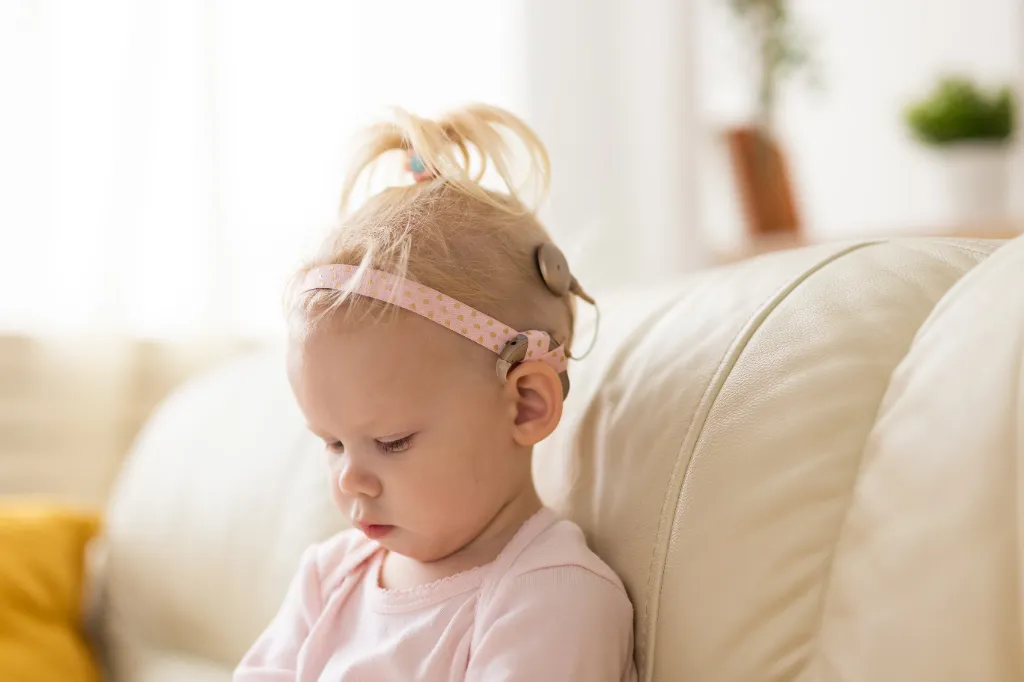Defining Sensory Impairments in Children
Sensory impairments in children represent deeply personal experiences that shape the way a child perceives, connects with, and understands the world. Whether the impairment affects sight, hearing, or how the brain processes sensory information, each child’s story is unique and deserves to be understood with empathy and care.
But what exactly is a sensory impairment? At its core, it is a difference in how the senses – sight, hearing, touch, taste, smell, or balance – function. These differences may be congenital or acquired, temporary or lifelong, mild or profound. Yet, for the child experiencing them, the impact can be significant and complex. Rather than asking, “What is wrong with the child?”, a more compassionate question might be, “How does this child experience the world, and how can we walk alongside them?” Shifting the lens from deficit to difference invites a more humane, person-centred approach that honours each child’s dignity and inner world.
Importance of Addressing Sensory Impairments in Children
Each child is a whole person, with their own rhythm, preferences, fears, and dreams. Addressing sensory impairments means tuning in to their unique sensory language and responding with empathy and insight. Sensory impairments in children may not always be immediately visible, but their effects run deep. They can quietly shape a child’s world, influencing how they connect with others, how they learn, and how they experience the beauty and challenge of everyday life. Recognising these impairments is a moral and compassionate imperative that speaks to the heart of person-centred care.
Children with visual impairments, for instance, may develop a rich sense of spatial awareness through touch and sound. A child’s hearing loss may cause higher sensitivity to facial expressions and visual signals. Some children experience Sensory Processing Disorder, which may cause them to react strongly to everyday stimuli (sounds, textures, or smells) that others hardly notice. These are not failures of the child to cope but reflections of a nervous system wired differently.
Types of Sensory Impairments in Children
Sensory impairments do not affect the cognitive skills of children. However, some children with sensory impairments have difficulties processing information, which can affect how they learn. With the right support, children can find solutions for their challenges, improving their confidence and well-being.
Some of the most common types of sensory impairments include:
- Visual Impairments
- Hearing Impairments
- Olfactory Impairments
- Dual Sensory Impairment
- Sensory Processing Disorder
Visual Impairments
Sight impairments can vary from mild to severe.
Visually impaired children may have low vision or permanent vision loss, which cannot be corrected by using glasses and can affect daily functioning. People with low vision lose sensory sight and cannot recognise objects or people nearby. Some people may use supportive devices or objects to help them move around and perform daily activities. Individuals are considered blind if their visual field is less than 20 degrees in diameter.
Hearing Impairments
Hearing impairment is a mild or severe hearing loss which can be caused by many factors, like infections, injuries and birth complications.

Hearing loss can range from mild or partial to significant hearing loss, which is a total loss of hearing. Most people develop hearing loss as they age, but children can also be diagnosed with a hearing impairment. Some of the impairments can be corrected by wearing hearing aids. Early intervention is essential in helping deaf children learn how to communicate. British Sign Language, or BSL, is the most common sign language used by children and other people with hearing loss.
Speech Impairments
A child with a speech impairment may have difficulty with sound production, voice resonance or the flow of speech. Children vary in speech development and language skills, and while there are many milestones healthcare professionals expect children to hit before turning a certain age, every child is different. However, speech impairments in children can cause challenges with vocal communication, so proactive support is crucial in helping children develop their language and communication skills.
Olfactory Impairments
Our sense of smell informs us about our surroundings, which is the only sense that remains active during sleep. A sensory impairment that impacts smell is called an olfactory impairment, and a sensory impairment of the olfactory function can have a significant impact on quality of life. Most of the causes of olfactory impairment are irreversible, and children need lifestyle modifications to help minimise risks and have a better quality of life.
Sensory Processing Disorder
Sensory processing disorder is a condition where children can have difficulties receiving and responding to environmental information. Children with a sensory processing disorder may misinterpret sensory information and can under-respond or overreact to information. Other signs of sensory processing disorder include:
- Incoordination
- Sounds may be too loud or irritating
- Difficulty engaging in conversation with other children
- Light may feel too bright
- Clothing may feel itchy
- Bumping into things
Multi-Sensory Impairments (MSI)
When we talk about children with sight and hearing impairments, we talk about children with multi-sensory impairments. Sight and hearing are often known as the distance senses because they give information about what is around us.
When we cannot process information around us, we cannot communicate and respond to that information. When one of the distance senses is impaired, information from other senses can compensate to some degree. Children with multi-sensory-impairment use all other senses together in order to gain information. For many children, touch can provide significant help in learning about the world around us and serve as a means of communication.
Some children with MSI are very skilled in recognising movement around them and can feel even the most subtle change in air pressure on their skin, and recognise people by their smell.
Assessment and Diagnosis of Sensory Impairments
Early intervention is essential for children with sensory impairments, especially in preventing isolation and stigma. For example, early intervention for children with hearing impairments is crucial, as it can enhance their speech development. Children need to receive early intervention so they can receive proactive support.
Assessing a child’s sensory status is the key to determining what services and support will help them maximise and promote using other senses.
Sensory assessments involve both informal and formal assessments. Specialists like audiologists and ophthalmologists usually perform formal assessments, while informal assessments often focus on observing how the child behaves in their environment. All information collected helps create a clear picture of a child’s abilities and needs.


Early Diagnosis
Early diagnosis can vastly improve the quality of life for sensory-impaired children. The diagnosis can give a clear path to achieving milestones and help children develop. For example, children with a visual impairment may require help learning how to use their fine and gross motor skills. An early diagnosis can help create a strategy of how children with sensory impairment will utilise all their other senses, and get support from family and the community, to live an enjoyable, fulfilling and active life.
Risk Factors
In the UK, 2 million people live with sight loss, with 340,000 registered as partially sighted or blind. Additionally, 40% of people with a learning disability also have a hearing impairment.
Risk factors for sensory impairments are more significant in adults than in children and include:
- Genetics
- Injuries and infections
- Cataracts
- Difficulties during birth
- Loud noises
Impact of Sensory Impairments on Child Development
Sensory impairments significantly impact children, but through proactive methods and strategies, children can still experience healthy development.
Children with visual impairments may struggle to differentiate facial expressions. They may be unable to see reactions to things, so they are also unable to learn by watching and require different educational methods. Some impairments lead to restricted mobility, hugely impacting how children play. Play development is essential for children’s development as it leads to learning about concepts such as social skills. It’s important to find different methods to help children play, ensuring the inclusion of activities. Promoting acceptance, accessibility, and equality is critical to helping children feel confident and empowered.
Assistive Technologies
In a world where every child deserves to thrive, the presence of sensory impairments can introduce barriers that challenge communication, independence and learning. Yet, these barriers aren’t insurmountable. They offer pathways to inclusion and growth through assistive tools designed to enhance the abilities of children with sensory impairment. But how can we ensure that the use of these technologies remains compassionate, tailored and centre around the individual needs of each child?
For a child with hearing loss, even the sound of a parent’s voice can become a distant murmur. For a child with visual impairments, the vibrant illustrations in a storybook may fade into abstraction. In these moments, assistive tools become bridges to understanding, expression and comfort. From hearing aids and cochlear implants to braille displays, screen readers, tactile toys, and sensory regulation tools, the range of technologies continues to grow. When used thoughtfully, assistive technology helps children connect with their world on their own terms, encouraging autonomy while respecting their unique sensory profiles.
Assistive technologies also have the power to bring children closer to others. Communication devices can enable children to express needs, preferences, and personalities that might otherwise remain hidden.
Promoting Inclusion and Accessibility
When we speak of children with sensory impairments, we are not merely referring to vision or hearing loss but acknowledging the diversity of human experience. These children perceive the world differently, and our collective responsibility is to ensure that their world is rich, inclusive, and accessible. Instead of asking how a child can adapt to a setting, we asked how the setting can adapt to the child.
It invites educators, therapists, support workers, and communities to honour each child’s unique way of engaging with their environment. For a visually impaired child, inclusion might mean tactile learning resources and audio-described stories. For another with auditory processing differences, it could mean quiet spaces and visual cues that reduce cognitive overwhelm.
Also, vocabulary plays a decisive role in shaping attitudes. When we replace “disability” with “different ability” or talk of “barriers” instead of “limitations,” we begin to reshape societal narratives. We move from pity to partnership, from exclusion to empowerment. Let us ask ourselves: Do our learning spaces reflect the diversity of the children we serve? Do our teaching methods invite every child to participate fully? Are we ready to adapt, listen, and evolve?
The Role of Parents and Caregivers
What textures calm my child? What sounds bring joy or discomfort? Can a quiet corner become a sanctuary? This architecture of safety and trust allows a child with sensory impairments to feel seen by his parents. Of course, the journey is rarely easy. Parents often face moments of uncertainty, isolation, and even grief for the path they thought parenting might take. But within those moments lies transformation. When a child begins to thrive because someone believed in their way of experiencing the world, the triumph is profound. But perhaps the most transformative tool a parent brings is belief. Belief in their child’s potential. Belief that joy is possible. Belief that difference is not deficiency.
Compassionate care begins with curiosity. A caregiver who notices a child flinching at loud noises might explore sound-dampening headphones, not as a quick fix, but as a way to honour the child’s experience. Another who observes joy when the child feels different textures might intentionally introduce tactile activities to foster comfort and exploration. Specialist support networks, professional guidance, and person-centred approaches such as sensory diets or tailored learning environments can help enormously. To support a child with a sensory impairment is to commit to a journey of mutual growth. It is to listen with more than ears, to see with more than eyes. In doing so, caregivers illuminate a path for the children they support and for all of us—a path where difference is not a barrier but a doorway to deeper understanding.
Unique Community Services Support Children with Sensory Impairments
At Unique Community Services, we embrace diversity, inclusion and equality. We create pathways for people with sensory impairments to thrive in everyday activities, enabling them to participate fully in our society. It involves developing policies and practices to remove barriers. Removing barriers in communication and helping people gain the ability to participate in society entirely is what makes for a stronger and more cohesive community.
The people we support are our main priority, and by creating an accepting and supportive environment, we encourage people to reach their potential and become active members of society.
We deliver person-centred care across the UK, and you can contact us today to find out more about our services.
You can find us in our Manchester and Leeds offices.




